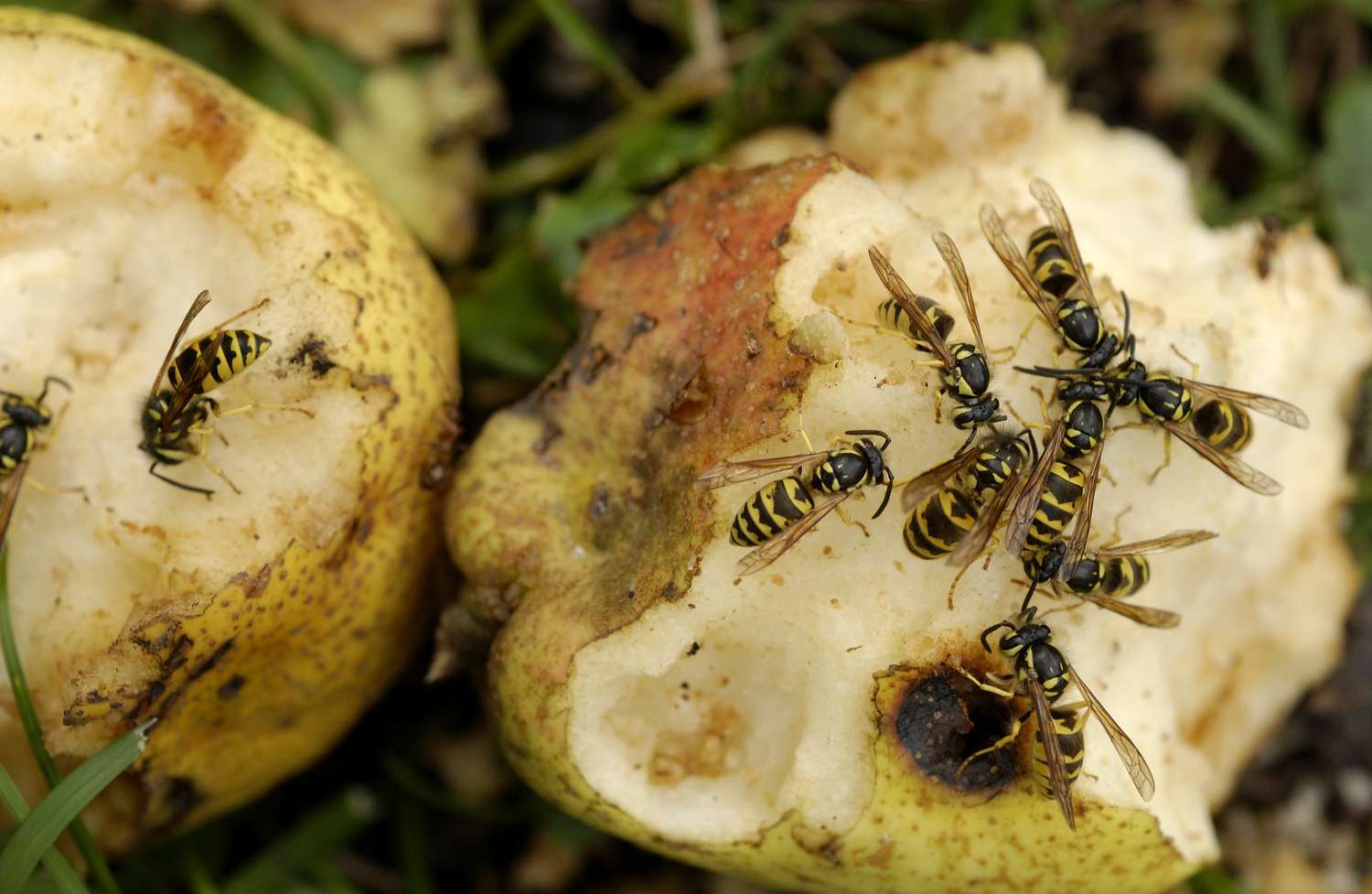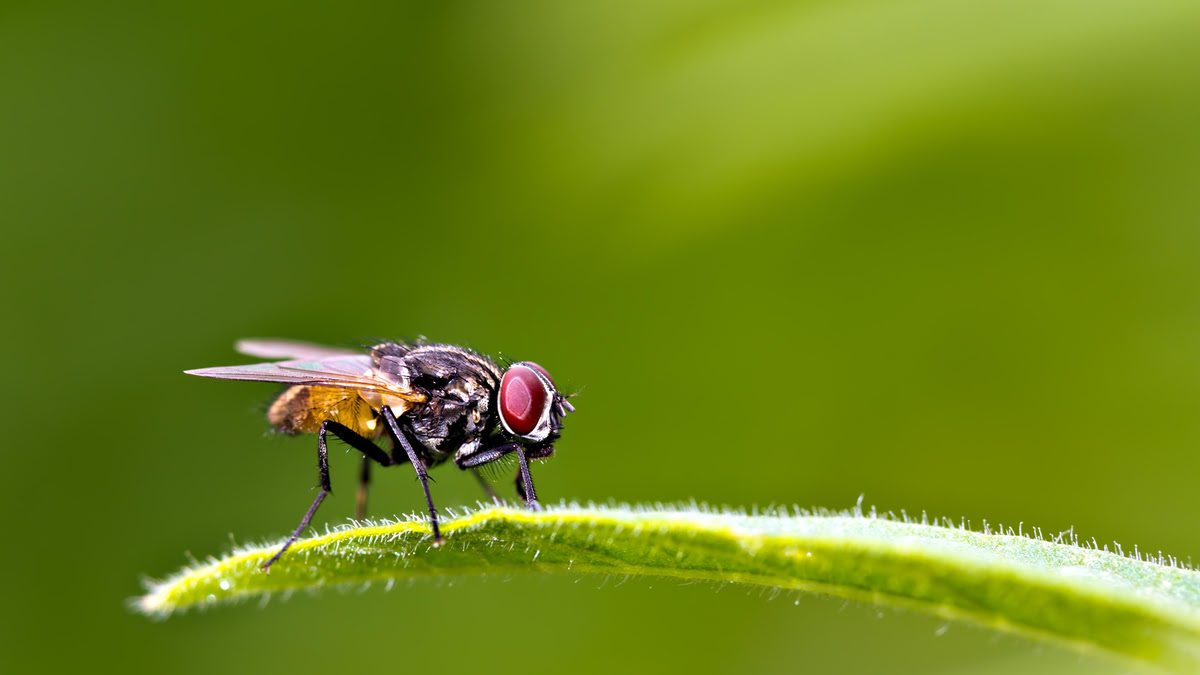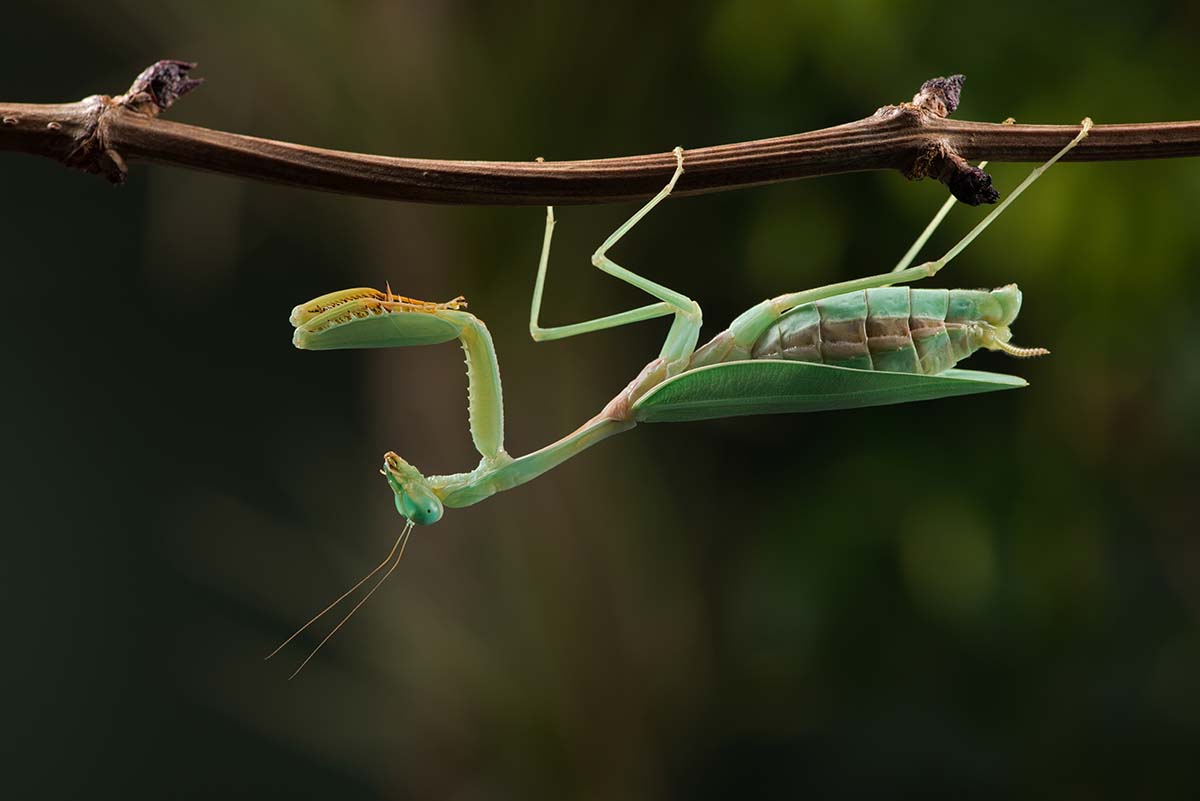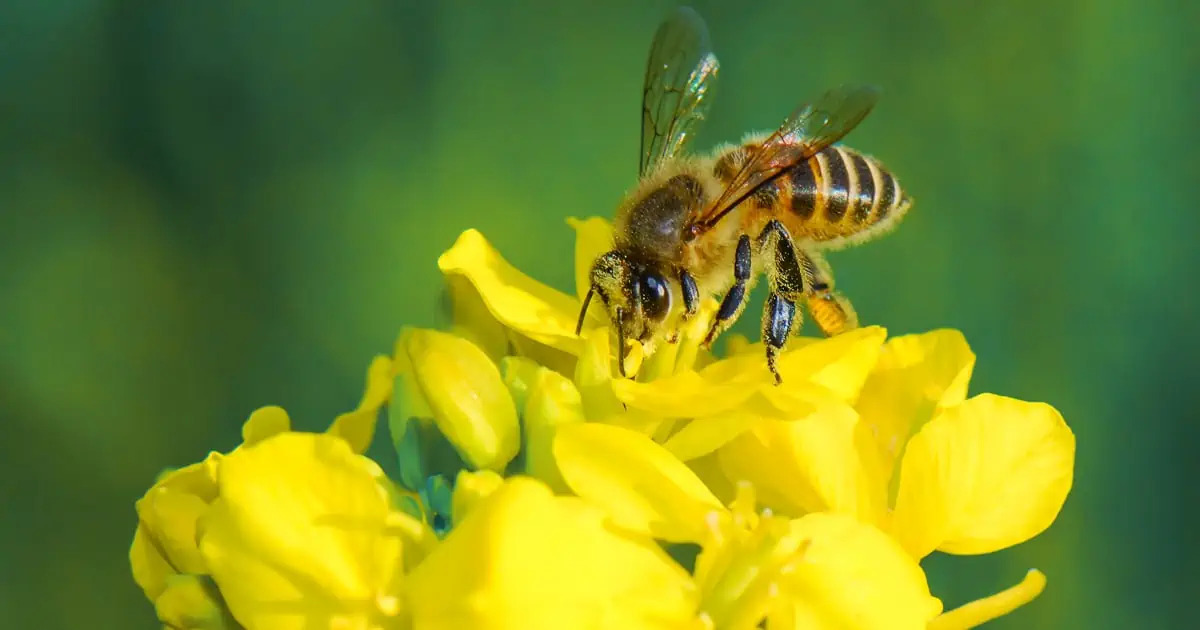Home>Gardening News and Trends>Latest News>How Do Insects Reproduce
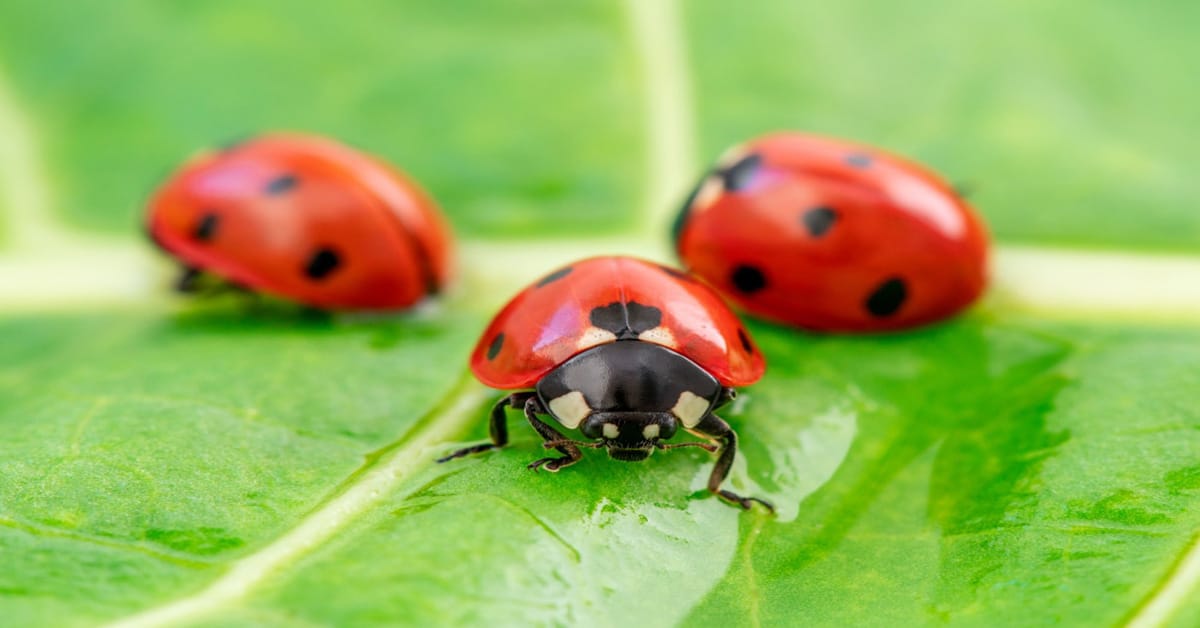

Latest News
How Do Insects Reproduce
Modified: January 22, 2024
Stay updated with the latest news on how insects reproduce. Discover fascinating insights and learn about the unique reproductive strategies of various insect species.
(Many of the links in this article redirect to a specific reviewed product. Your purchase of these products through affiliate links helps to generate commission for Chicagolandgardening.com, at no extra cost. Learn more)
Table of Contents
Introduction
Welcome to the fascinating world of insect reproduction! Insects, comprising the largest and most diverse group of animals on the planet, have evolved unique and intricate methods of reproducing and ensuring the survival of their species. From the familiar butterfly to the elusive praying mantis, insects have captivated humans with their mesmerizing mating rituals and reproductive strategies.
Reproduction in insects can be categorized into two main types: sexual reproduction and asexual reproduction. Sexual reproduction involves the fusion of genetic material from two parents, resulting in offspring with a combination of traits from both. On the other hand, asexual reproduction is the production of offspring without the involvement of genetic material from another individual.
Sexual reproduction in insects involves various fascinating processes, such as mating behavior, internal fertilization, and unique methods of egg laying and development. In contrast, asexual reproduction can occur through parthenogenesis, fragmentation, and regeneration. Each method of reproduction has its own advantages and adaptations that have allowed insects to thrive in a wide range of habitats.
Throughout this article, we will delve into the remarkable world of insect reproduction, exploring the intricacies of sexual and asexual reproduction, as well as special cases that demonstrate the extraordinary adaptability and diversity of insect species. So, let us embark on this enthralling journey into the remarkable realm of insect reproduction!
Types of Insect Reproduction
Insects employ two main types of reproduction: sexual reproduction and asexual reproduction. Sexual reproduction involves the joining of genetic material from two individuals, resulting in offspring with a combination of traits from both parents. Asexual reproduction, on the other hand, does not involve the fusion of genetic material and allows for the production of offspring without the need for a mate. Let’s explore these two different modes of reproduction in more detail.
1. Sexual Reproduction: Sexual reproduction is the most common form of reproduction in insects. It involves the mating of two individuals, typically a male and a female. This process allows for genetic diversity and the combination of favorable traits from both parents, increasing the chances of the offspring’s survival in changing environments. Insects have evolved various mechanisms to facilitate sexual reproduction.
2. Asexual Reproduction: Asexual reproduction is a mode of reproduction where offspring are produced without the involvement of a mate. Insects utilize different strategies for asexual reproduction, ensuring the survival and proliferation of their species even in the absence of suitable mates. Asexual reproduction offers certain advantages, such as rapid population growth and the ability to colonize new environments quickly.
In the following sections of this article, we will delve deeper into the fascinating intricacies of sexual and asexual reproduction in insects. We will explore the specific processes and mechanisms involved in each type of reproduction, as well as discuss unique adaptations and strategies employed by various insect species. By gaining an understanding of these reproductive strategies, we can appreciate the remarkable diversity and adaptability of insects in their quest for survival and perpetuation.
Sexual Reproduction in Insects
Sexual reproduction is the primary method of reproduction in insects and involves the fusion of genetic material from two parent individuals. This process allows for genetic diversity and the combination of favorable traits, increasing the chances of the offspring’s survival in changing environments. Sexual reproduction in insects encompasses several fascinating processes, including mating behavior, internal fertilization, and unique methods of egg laying and development.
1. Mating Behavior: Insects exhibit a wide range of mating behaviors, each unique to the species. Mating behaviors often involve elaborate courtship rituals, where males display their attractiveness to females through visual displays, pheromones, or vibrational signals. These displays help in species recognition, mate selection, and the coordination of mating between males and females.
2. Internal Fertilization: In most insects, internal fertilization occurs during mating. The male transfers sperm to the female through specialized reproductive organs. In some cases, the male may also provide the female with additional substances, such as nutrients or protective coatings, to increase the chances of successful fertilization and offspring survival.
3. Egg Laying and Development: Once fertilization occurs, the female insect goes through the process of egg-laying. The eggs are usually laid in a suitable environment that provides the necessary conditions for development, such as moisture, temperature, and food sources. The methods of egg-laying vary among insects, with some depositing their eggs directly onto vegetation, others burying them in the ground, and some even depositing them directly onto or inside their prey.
After the eggs are laid, they undergo development, which can vary in duration and complexity depending on the insect species. Some insects undergo simple development, with the eggs hatching into nymphs or larvae that resemble miniature versions of the adult. Others undergo complete metamorphosis, where the eggs hatch into larvae, which then undergo a series of molts and transformations before emerging as adults.
Sexual reproduction in insects is a remarkable and diverse process, playing a critical role in the survival and adaptation of various species. By understanding the intricacies of mating behavior, internal fertilization, and the development of eggs, we gain insight into the extraordinary strategies that insects have evolved to ensure the continuity of their species.
# 1. Mating Behavior
Mating behavior in insects is a complex and diverse phenomenon that is crucial for successful sexual reproduction. It involves a series of actions and displays by both males and females to attract and select suitable mates. Mating behavior serves several purposes, including species recognition, courtship, and ensuring successful reproduction.
Insects employ a variety of sensory signals and cues to communicate and attract mates. Visual displays are common and may include vibrant colors or patterns on the wings, abdomen, or other body parts. Males often engage in elaborate dances or aerial acrobatics to showcase their attractiveness and fitness to potential females.
Pheromones, chemical signals released by insects to communicate with members of the same species, are another key aspect of mating behavior. These chemical cues can be detected by receptors on the antennae and other sensory organs, allowing insects to recognize and locate potential mates. Pheromones can attract individuals of the opposite sex from a distance, ensuring that mating occurs between conspecifics.
Another fascinating aspect of mating behavior in insects is the use of sound or vibration, especially in species that are active at night or in areas with dense vegetation. Male insects may produce unique mating calls or courtship songs to attract females or to communicate their presence to potential rivals. These acoustic signals are often species-specific and play a crucial role in mate selection.
Mating behavior also involves intricate rituals and displays that serve to assess the quality and suitability of potential mates. Females, in particular, are selective in choosing their partners, as they typically invest more energy and resources in reproduction. Male insects may engage in competitive interactions to establish dominance and secure mating opportunities. These interactions can range from aggressive fights to territorial displays.
It is important to note that mating behavior in insects can vary greatly between species. Some insects engage in solitary mating, where individuals locate and mate with each other without much interaction. In contrast, others partake in group mating, where males compete for access to females in large aggregations.
Mating behavior in insects is a remarkable display of adaptations and strategies that have evolved to ensure successful reproduction. By understanding the intricacies of these behaviors, we gain insight into the incredible complexity and diversity of the insect world.
# 2. Internal Fertilization
Internal fertilization is a common method of reproduction in insects and involves the transfer of sperm from the male to the female’s reproductive system. This process increases the chances of successful fertilization and allows for the development of offspring within the female’s body.
Different insect species have evolved various mechanisms and structures to facilitate internal fertilization. Males often possess specialized reproductive organs, such as claspers or genitalia, which allow them to transfer their sperm to the female during mating.
During copulation, the male insect inserts his reproductive organ into the female’s reproductive tract. The sperm is then transferred from the male to the female, ensuring that it reaches the eggs for fertilization. Some insects have evolved complex genital structures that aid in the placement and retention of sperm within the female reproductive tract, increasing the chances of successful fertilization.
After internal fertilization occurs, the female stores the sperm within specialized reproductive structures called spermathecae. These storage organs allow the female to retain the sperm for an extended period, ensuring that fertilization can happen when conditions are favorable for egg-laying and development.
The utilization of internal fertilization in insects offers several advantages. It allows for the effective transfer of sperm to ensure fertilization, minimizing the chances of loss or wastage. Internal fertilization also provides the opportunity for the female to choose selectively which sperm will fertilize her eggs, favoring the fittest or genetically compatible males.
It is important to note that not all insects engage in internal fertilization. Some insects practice external fertilization, where the female lays her eggs and the male subsequently releases sperm onto them. This is common in aquatic insects or insects with indirect development, such as many insects that undergo metamorphosis.
Overall, internal fertilization in insects is a fascinating process that facilitates the successful transfer of sperm from the male to the female. This method increases the chances of successful fertilization and enables the female to contribute her genetic material to the development of the next generation. Through internal fertilization, insects have evolved remarkable adaptations to ensure the continuity and survival of their species.
# 3. Egg Laying and Development
After internal fertilization takes place, female insects engage in the crucial process of egg laying and development. The successful deposition and incubation of eggs ensure the survival and continuation of the species. Insects have evolved a wide range of strategies to protect and provide for their developing offspring.
The specific method of egg laying varies among insect species, depending on their ecological niche and environmental conditions. Some insects lay their eggs directly onto suitable surfaces, such as leaves, stems, or soil. These eggs are usually accompanied by protective coatings or secretions that provide them with a degree of protection from predators, pathogens, and desiccation.
Other insects, particularly those with aquatic lifestyles, deposit their eggs in water bodies. These eggs are usually encased in gelatinous capsules or attached to aquatic vegetation. This method of egg laying provides a moist environment for the developing embryos and protects them from predators and environmental fluctuations.
Some insects have evolved specialized behaviors or adaptations to ensure the survival of their young. For example, parasitic wasps and bees lay their eggs on or inside the bodies of other insect hosts. The developing larvae then feed on the host, ultimately resulting in its demise. This strategy allows the newly hatched offspring to have a ready source of food and protection.
Once the eggs are laid, the process of development begins. The duration and complexity of development vary greatly among insect species. Some insects have simple development, where the eggs hatch into nymphs or larvae that resemble miniature versions of the adult. These immature forms undergo a series of molts and grow in size before metamorphosing into adult forms.
Other insects undergo complete metamorphosis, which involves distinct stages: egg, larva, pupa, and adult. The eggs hatch into larvae that often bear little resemblance to the adult form and have specialized structures and feeding habits. The larvae undergo multiple molting stages, growing and developing as they feed on available resources. Eventually, they enter the pupal stage, during which profound changes occur in their body structure, often encased within a protective cocoon or pupal case. Finally, the adult emerges from the pupa, often exhibiting different appearance, behavior, and ecological roles than the larval stage.
Egg laying and development in insects are critical stages that determine the survival and success of the next generation. The various strategies and adaptations employed by insects highlight their remarkable ability to adapt to different environments and ensure the continuation of their species.
Asexual Reproduction in Insects
Asexual reproduction is a fascinating and diverse mode of reproduction seen in many insect species. Unlike sexual reproduction, asexual reproduction does not involve the fusion of genetic material from two individuals. Instead, offspring are produced from a single parent, resulting in offspring that are genetically identical or very similar to the parent.
There are several methods of asexual reproduction observed in insects, each with its unique adaptations and advantages.
1. Parthenogenesis: Parthenogenesis is a form of asexual reproduction where females produce offspring without mating or fertilization. The unfertilized eggs develop into viable embryos and eventually hatch into offspring. This mode of reproduction allows for rapid population growth and is particularly advantageous in environments where mates may be scarce or inaccessible.
2. Fragmentation and Regeneration: Insects that can regenerate body parts can reproduce through fragmentation and subsequent regeneration. This process involves the breaking or separation of a part of their body, such as a limb or segment, which can then develop into a complete individual. This form of asexual reproduction is seen in some species of insects, such as certain species of stick insects and praying mantises.
Asexual reproduction in insects offers several advantages. It allows for rapid population growth and colonization of new environments without the need to rely on finding suitable mates. This mode of reproduction can also ensure the preservation of beneficial traits in a population over time, as there is no genetic recombination that may dilute or eliminate advantageous traits.
It is important to note that asexual reproduction is not as common or widespread as sexual reproduction in insects. The majority of insect species rely on sexual reproduction to increase genetic diversity and adaptability. However, asexual reproduction remains an important and fascinating phenomenon in certain insect species, showcasing the incredible diversity and adaptability found within the insect world.
# 1. Parthenogenesis
Parthenogenesis is a unique form of asexual reproduction observed in some insect species. It is a process in which females produce offspring without mating or fertilization. Instead, the unfertilized eggs develop into viable embryos and eventually hatch into offspring. Parthenogenesis allows for the production of offspring that are genetically identical or very similar to the parent.
Parthenogenesis can occur through different mechanisms, depending on the insect species and their reproductive adaptations. There are three main types of parthenogenesis:
1. Automixis: Automixis involves the fusion of two haploid nuclei from the same individual to produce a diploid zygote. This fusion can occur during meiosis, resulting in the mixing of genetic material and ensuring some degree of genetic variation in the offspring. Automictic parthenogenesis is commonly seen in parasitoid wasps and some aphid species.
2. Apomixis: Apomictic parthenogenesis involves the development of an embryo from an unfertilized egg without any nuclear fusion. The egg develops into an embryo by bypassing meiosis or modifying the process to produce a diploid individual. This type of parthenogenesis is observed in some ants, bees, and other insect species.
3. Arrenotoky: Arrenotoky is a form of parthenogenesis where males are entirely absent. Females produce unfertilized eggs that develop into females. This type of parthenogenesis is mainly seen in certain gall wasp species.
Parthenogenesis offers several advantages to insect species. It allows for rapid population growth, as females can produce offspring without the need to search for mates. This is particularly beneficial in environments where mates may be scarce or inaccessible. Parthenogenesis also ensures the preservation of beneficial traits in a population, as there is no genetic recombination that may dilute or eliminate advantageous traits.
It is important to note that parthenogenesis is not as common as sexual reproduction in the insect world. Most insects still rely on sexual reproduction to increase genetic diversity and adaptability. However, parthenogenesis remains a fascinating and important reproductive strategy in certain insect species, showcasing the incredible adaptability and versatility found within the insect world.
# 2. Fragmentation and Regeneration
Fragmentation and regeneration are unique forms of asexual reproduction observed in certain insect species. This process involves the breaking or separation of a part of an insect’s body, such as a limb or segment, which can then develop into a complete individual. Fragmentation and regeneration allow for the production of new offspring from a single parent, without the need for mating.
When an insect undergoes fragmentation, the broken body part has the ability to regenerate and develop into a new individual. This remarkable process of regeneration involves the growth and differentiation of new tissues, organs, and structures needed for the complete development of the offspring.
The ability to regenerate varies among insect species, with some having a remarkable capacity to regrow body parts while others have more limited regenerative abilities.
Fragmentation and regeneration are commonly observed in species such as stick insects and praying mantises. For instance, if a fragment of a stick insect’s leg is broken off or a segment of its body is detached, it can regenerate and develop into a new individual. The regenerative process involves the formation of a new exoskeleton, the growth of internal organs, and the development of appendages.
This form of asexual reproduction offers several advantages to insects. Fragmentation and regeneration allow for the colonization of new habitats and the rapid expansion of populations. It increases the chances of survival, as the parent can produce offspring even if the main body is damaged or lost. Additionally, this form of reproduction can aid in the regeneration and repair of body parts, enhancing the insect’s ability to escape from predators or adapt to changing environmental conditions.
It is important to note that fragmentation and regeneration are not as common as sexual reproduction in the insect world. Most insect species still rely on sexual reproduction as the primary mode of reproduction. However, in certain insect species, fragmentation and regeneration are fascinating adaptations that showcase the remarkable regenerative capabilities and adaptability found within the insect kingdom.
Special Cases of Insect Reproduction
While sexual and asexual reproduction are the primary modes of insect reproduction, there are several special cases that showcase unique reproductive adaptations and strategies. These special cases highlight the incredible diversity and ingenuity of insects when it comes to ensuring the survival and propagation of their species.
1. Traumatic Insemination: Some insect species, such as bed bugs and certain species of true bugs, employ traumatic insemination as a form of reproduction. In this fascinating process, males bypass the female’s reproductive system and directly inject sperm into her body through specialized structures. This method allows for quick and efficient fertilization but comes with potential costs and challenges for the female, as it can cause physical damage.
2. Eusociality: Eusocial insects, such as bees, ants, and termites, have developed complex social structures where reproductive individuals (queens) are responsible for laying eggs, while non-reproductive individuals (workers) engage in tasks such as foraging, building nests, and caring for the offspring. This specialized form of social organization enables the efficient division of labor and ensures the survival and success of the colony as a whole.
3. Superparasitism: Superparasitism is a phenomenon observed in certain parasitic wasps and flies, where multiple eggs are laid in a single host individual. Each egg develops into a separate larva, and they compete for resources within the host. While this behavior can reduce individual offspring survival rates, it increases the overall chances of at least one offspring successfully completing its development and emerging as an adult.
4. Reproductive Parasitism: Reproductive parasitism occurs when an insect species manipulates the behavior of another species to serve its own reproductive interests. For example, cuckoo bees lay their eggs in the nests of other bee species, where the cuckoo bee larvae consume the host larvae and resources. This parasitic strategy allows the cuckoo bee to offload the burden of nest construction and provisioning onto the host species, maximizing its own reproductive success.
These special cases of insect reproduction showcase the incredible diversity and complexity of reproductive strategies in the insect world. They highlight the myriad adaptations that have evolved to ensure successful reproduction, even in challenging and competitive environments. Studying these unique cases offers valuable insights into the fascinating and remarkable world of insect reproductive biology.
Conclusion
The world of insect reproduction is a captivating and intricate realm, shaped by a wide range of strategies and adaptations. Insects have evolved remarkable mechanisms to ensure the survival and perpetuation of their species, utilizing both sexual and asexual modes of reproduction.
Sexual reproduction is the most common form of reproduction in insects, involving the fusion of genetic material from two parent individuals. Mating behaviors, internal fertilization, and egg laying and development are fascinating aspects of sexual reproduction that showcase the diverse strategies employed by different insect species.
Asexual reproduction in insects, such as parthenogenesis and fragmentation with regeneration, offers unique advantages including rapid population growth and the preservation of beneficial traits. These forms of reproduction allow for the colonization of new habitats and ensure survival in the absence of suitable mates.
Special cases of insect reproduction, such as traumatic insemination, eusociality, superparasitism, and reproductive parasitism, further demonstrate the incredible diversity of reproductive strategies. These adaptations showcase the ingenuity of insects in ensuring successful reproduction in various ecological niches.
Studying insect reproduction not only provides insight into the intricate processes that govern their survival but also sheds light on broader evolutionary principles. The diversity of reproductive strategies in insects highlights the adaptability and resilience of this fascinating group of animals.
As we continue to explore and unravel the mysteries of insect reproduction, we gain a deeper appreciation for the complexity and beauty of the natural world. From the miraculous transformation of a caterpillar into a butterfly to the diverse mating rituals of beetles, insects continue to inspire awe and fascination in their reproductive marvels.
Insect reproduction remains an intriguing field of study, offering endless discoveries and insights into the intricate web of life on Earth.




